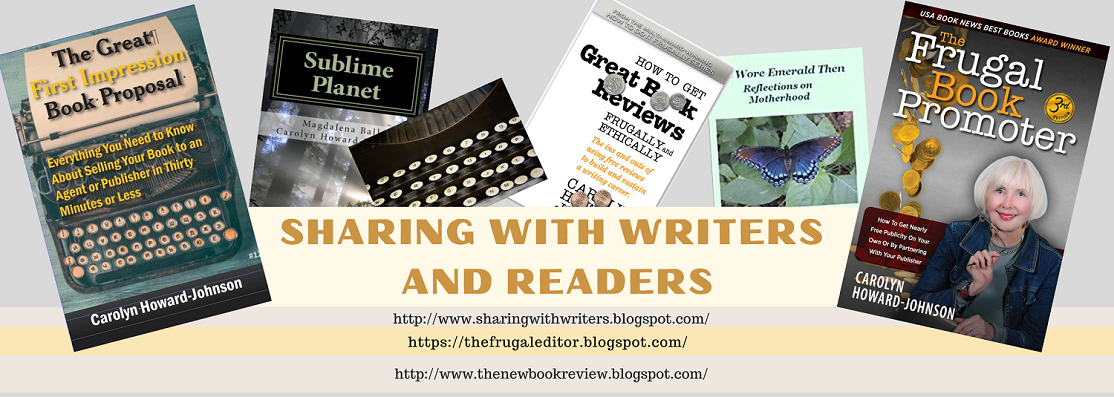Novel Writing vs Screenplay Writing
A guest post by Phyllis Zimbler originally published on her blog, www.PhyllisZimblerMiller.com
This
morning in my Twitter feed I saw the @Skrawl_it tweet sharing a quote that
said: “You know you’re a writer when you sit down to write your novel and you
procrastinate by dreaming about the day it’s adapted for film instead.”
In the shower I
pondered that quote and how the word “instead” should have been left off. This
is because telling the story in novel format or in screenplay format is very
different.
For the last few
years I’ve been taking my screenplays (and the ones I write with my husband
Mitchell R. Miller) and adapting them into books and ebooks on Amazon. And less
often I take a novel I’ve written and adapt it for a screenplay.
And “adapt” is the
operative word because the two formats are not the same.
One of the biggest
differences is POV (point of view). In contemporary fiction writing the preferred
method is a single POV in any scene. In other words, you can have multiple POV
characters in a novel as long as those multiple POVs are not in the same scene.
In any one scene the reader can only know the thoughts of one POV character.
In screenplay writing
there is no POV character because there is no internal monologue. This makes
writing easier in one respect and harder in another. For example, if dialogue
to share a character’s inner thoughts isn’t appropriate in the screenplay, how
do you show his/her angst or any other private emotion? (Cigarette smoking used
to be a frequent stand-in for this angst.)
And while a character
whose POV you want to share could reveal this in dialogue, you have to be very
careful not to be “on the nose” with the dialogue — for example, the “as you
know, Bob” method. This is having one character tell something to a second
character who already knows the information only so that the information can be
imparted to the audience.
Subtext is very
important in screenplay dialogue, and I’m still working on mastering this. A
subtext example would be a couple fighting over whose turn it is to take out
the trash when the subtext of the dialogue is really who loves who more.
At a seminar I once
heard a famous Hollywood screenwriter say that he adapts a book to a screenplay
by opening the book and starting to type. In terms of the plot, this may be
true if the novel is told more or less in linear fashion and without huge
swatches of interior monologue. This is not true for all books.
One such example is
the 1997 Oscar best picture winner “The English Patient.” It was known around
Hollywood that many studios had passed on the novel by Michael Ondaatje because
the adaptation could not be imagined. After I saw the movie (and predicted it
would win the Oscar for that year) I read the novel. While the novel is also
compelling, I saw what a genius Anthony Minghella was in his adaptation of the
book. (For the success of the movie it surely helped that Minghella also got to
direct his screenplay.)
In terms of my own
writing of both novels and screenplays, I am always working on learning more.
At this precise moment I just finished Jeff Gerke’s book “The First 50 Pages”
(recommended by Paula Wynne’s book “Pimp Your Fiction”) and am now reading his
book “Plot Versus Character” at the same time I’m taking a ScreenwritingU.com
online course.
Much of the knowledge
I’m learning from the books and the course is applicable to both novel writing
and screenplay writing. In fact, I’m in the midst of revising a scene in my
feature film screenplay of sci fi THE MOTHER SIEGE and then I’ll revise that
scene in the novel.
And speaking of that
revision, it is time to get back to my homework for the ScreenwritingU.com
course!
© 2016 Miller Mosaic
LLC
ABOUT THE AUTHOR
Phyllis Zimbler
Miller (@ZimblerMiller) has an M.B.A. from The Wharton School
and is the author of fiction and nonfiction books/ebooks. Phyllis is available
by Skype for book group discussions and may be reached at pzmiller@gmail.com
Her Kindle fiction
ebooks may be read for free with a Kindle Unlimited monthly subscription — see www.amazon.com/author/phylliszimblermiller — and her Kindle nonfiction
ebooks may also be read for free with a Kindle Unlimited monthly subscription —
see www.amazon.com/author/phylliszmiller
-----
Carolyn Howard-Johnson, author of This Is the Place; Harkening: A Collection of Stories Remembered; Tracings, a chapbook of poetry; and how to books for writers including the award-winning second edition of, The Frugal Book Promoter: How to get nearly free publicity on your own or by partnering with your publisher; The multi award-winning second edition of The Frugal Editor; and Great Little Last Minute Editing Tips for Writers . The Great First Impression Book Proposal is her newest booklet for writers. She has three FRUGAL books for retailers including A Retailer’s Guide to Frugal In-Store Promotions: How To Increase Profits and Spit in the Eyes of Economic Downturns with Thrifty Events and Sales Techniques. Some of her other blogs are TheNewBookReview.blogspot.com, a blog where authors can recycle their favorite reviews. She also blogs at all things editing, grammar, formatting and more at The Frugal, Smart and Tuned-In Editor .

No comments:
Post a Comment
Thank you for commenting on posts at #SharingwithWriters blog, a Writers Digest 101 Best Websites pick at
www.SharingWithWriters.blogspot.com. You might also find www.TheFrugalEditor.blogspot.com full of resources you can use and
www.TheNewBookReview.blogspot.com, a free review site will benefit your book or increase your reading pleasure.